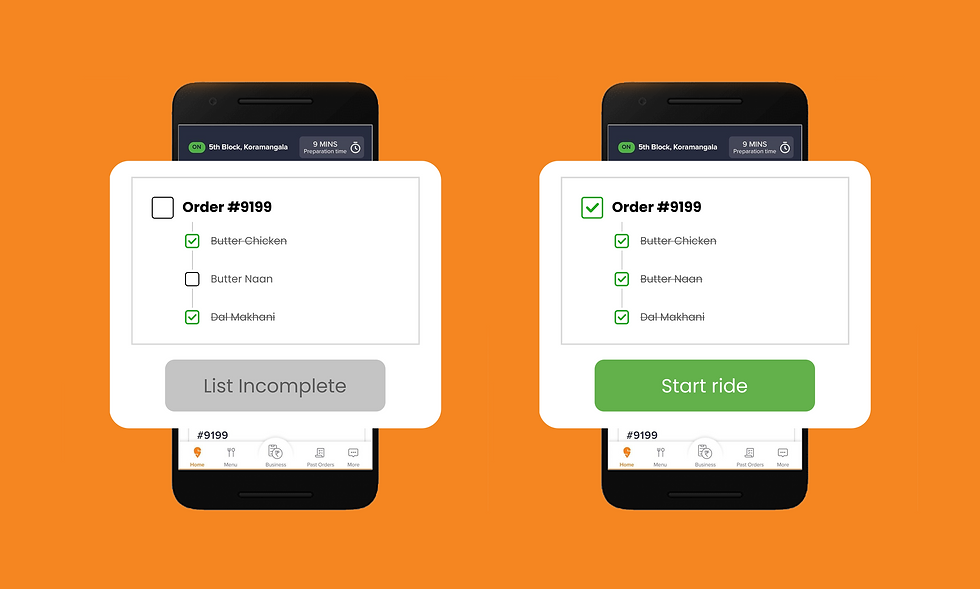How can we use Psychology to make customers spend more?
- Mohammed Sannan
- Jun 16, 2021
- 3 min read
If you've very been to a KFC, you'll relate to this experience. I was with my friends, and after carefully making our selection, we were surprised to see the final amount that was a little extra with the taxes. For others, it might not be a big issue for a bunch of teenagers that meant re-evaluating our order. Mind you, GST was 18% back in 2017.

Why am I sharing this story now? What does it have to do with the food delivery apps? As a food lover, I still get discouraged trying to order food online when the final amount is higher than expected (Despite only a 5% increase and packaging charges).
Thinking, is this a real problem? I went to the place with no filter: Twitter. There were many tweets about this issue (attaching a few of them here):


So, I looked around to find any good way to approach this problem. Then I recollected McDonald's' has What You See Is What You Pay menu after GST was standardized (2017). In 2017 McDonald's posted its first-ever net profit of Rs 65.2 lakh after 22 years of service in India, is there a correlation between its menu pricing and profit? That assumption is far-fetched, so let's not go there.
What we experienced at KFC was something we call Expectation bias (EB).
Expectation bias:
Expectation bias is known as having a firm belief or mindset towards a particular outcome. It can occur even when there is evidence to the contrary.
In my case, the price we expected was not what we received. Thus, feeling a little betrayed. Unexpected costs were the number one reason shopping carts get abandoned online.

At McDonald's, they came up with a strategy to display a tax-inclusive menu, which may seem expensive upfront to its customers. However, the customer response has been excellent, says Amit Jatia (vice-chairman, Westlife Development Ltd, which operates McDonald's in India). In the quick-service restaurant (QSR) industry, menu pricing is always plus taxes, but McDonald's was the first to introduce a tax-inclusive menu.
More about it at: https://www.dnaindia.com/business/report-at-mcd-it-s-what-you-see-is-what-you-pay-2520116
The lesson here:
It costs five times more to acquire a new customer than it does to retain an existing one. So why re-invent the wheel, using McDonald's menu strategy to make the customer feel he/she is getting a better deal. Less than 109 seconds is all you have to make the first impression. That is the approximate amount of time customers spend scanning through a menu. With the rise in online food ordering, your online menu is the first and only chance you will have to get your customers to place an order.

Framing effect
The framing effect is a cognitive bias where people decide on options based on whether the options are positive or negative connotations. The framing effect has been used in marketing since there has been something to sell.
We can do A/B testing to see if there's a change in the conversion rate and cart abandoning rate.

To see if tax-inclusive pricing makes a difference when coupons are applied, I tested it out: https://docs.google.com/spreadsheets/d/1o7mCt08RuK1EXDlpVanHZfpZGI0B-V5NyNNOBxFrBb8/edit?usp=sharing (Feel free to make a copy)

As you can see, it does not have any difference in the total. Note: There are different types of coupons offered by food delivery apps, so this solution might not work for some coupons.
Metrics
Metrics are measures of quantitative assessment commonly used for assessing, comparing, and tracking performance or production. User-centric performance metrics are a critical tool in understanding and improving the experience of a product in a way that benefits real users.

We must see if there is an increase in conversion rate and decrease in cart abandoning rate by targeting the users who have been consistently abandoning the cart without proceeding to the payment portal.
Summary
Applying (right) Psychology principle to our products can be very beneficial. Every company uses a form of psychology to make its product/ service better. By including tax-inclusive pricing, we also avoid information overload on the user.
Read more: https://growth.design/psychology/
Even amazon uses inclusive-tax pricing. Will this strategy work for food delivery apps? To test this out, I surveyed within my circle, and here are the results. It was not what I was expecting but out of 9 responses, 5 chose option 2 (Without tax), and four selected option 1 (With tax) checkout page. The sample of this survey is too small to conclude anything. Also, I did not use any control to weed out any exceptions.
Which option will you choose: https://forms.gle/YRfwZpk6rrpeZzJV8
PS: If there are any product problems you'll want me to work on as a case study or constructive feedback, do reach out to me on Linkedin.




Comments